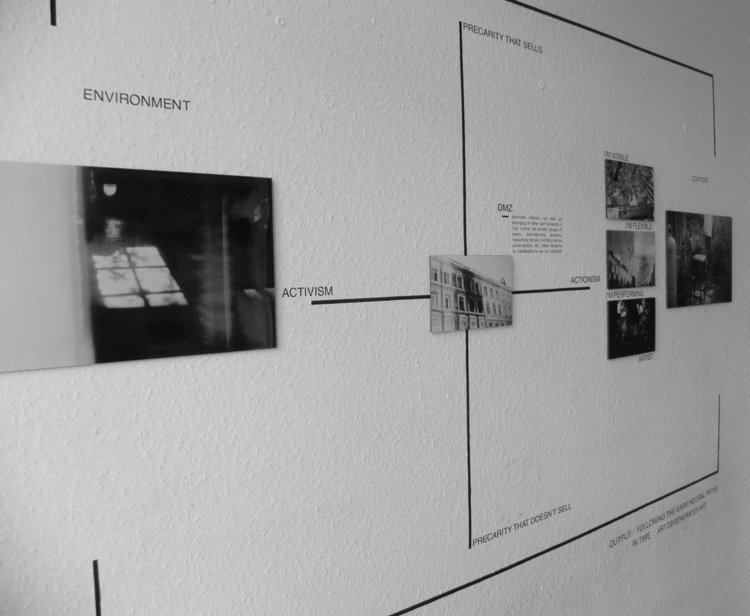
Tracing Commons
‘Tracing Commons’ was a one-day intervention undertaken on November 26th, 2016, in Earl's Court, London. At the time, the venue was under the management of Art Guard, a non-profit organisation of property guardians with a specific focus on providing live/work spaces for artists and other cultural producers in the capital.
The event was extensively documented and later published by without appeal in February 2017 as a colour newspaper in an edition of 50, offering details about the intervention and exclusive artists' spreads featuring work from Lia Boscu, Raluca Branea and Will Gresson.
- spatial intervention in three acts -
"Only figures on the margins of a field can bring its blind spots to the fore. The field itself is pulled into visibility by those whose status within in is unclear, seeming to be both inside and outside it at the same time, whether it be outsiders visiting the inside, insiders drifting outside, or those simply who venture too deep inside."
Mark Wigley, Buckminster Fuller Inc. Architecture in the Age of Radio, 2015
Tracing Commons was an ephemeral act of self-organisation not open to the public, akin to studio performances which would only become visible through documentation. By claiming visibility both inside and outside a domestic space, the artists were interested in creating a potential heterotopia - an in-between space where the work is presented in a setting lacking traditional institutional support or public access, where it is impossible for the artist-audience feedback loop to be completed in a physical space. It consisted of three distinct parts unfolding throughout the day :
The first was the installation of Case Study, v.1 in one of the apartments. This mixed media work reflected on recent conversations about perceived current conditions of artistic production and circulation, creating a framework for the subsequent acts.
In this setting, Home Practice took place on the balcony of the same apartment; a performance wherein Raluca Branea and Lia Boscu, mirroring each other, performed an intuitive rendering of a collective text - a transcript of this text will be printed in the upcoming publication. The action was focused on the windows, understood as a permeable membrane – a place of contact and exchange between the inside and outside. Considered as such, the window becomes a surface where the tensions associated with the geometrical delimitations of in/out are in constant flux. After Home Practice, an engaged discussion between the participants continued the dialogue started in the performance and provoked a visible alteration to the diagram on the wall, generating a second version of the work, Case Study, v.2.
A screening of two short film works by Will Gresson on the window of the apartment below, only visible from outside concluded the intervention. The videos considered these notions of temporary and in-between spaces by juxtaposing two experiences of being in transit and exploring their potential as sites of artistic production.